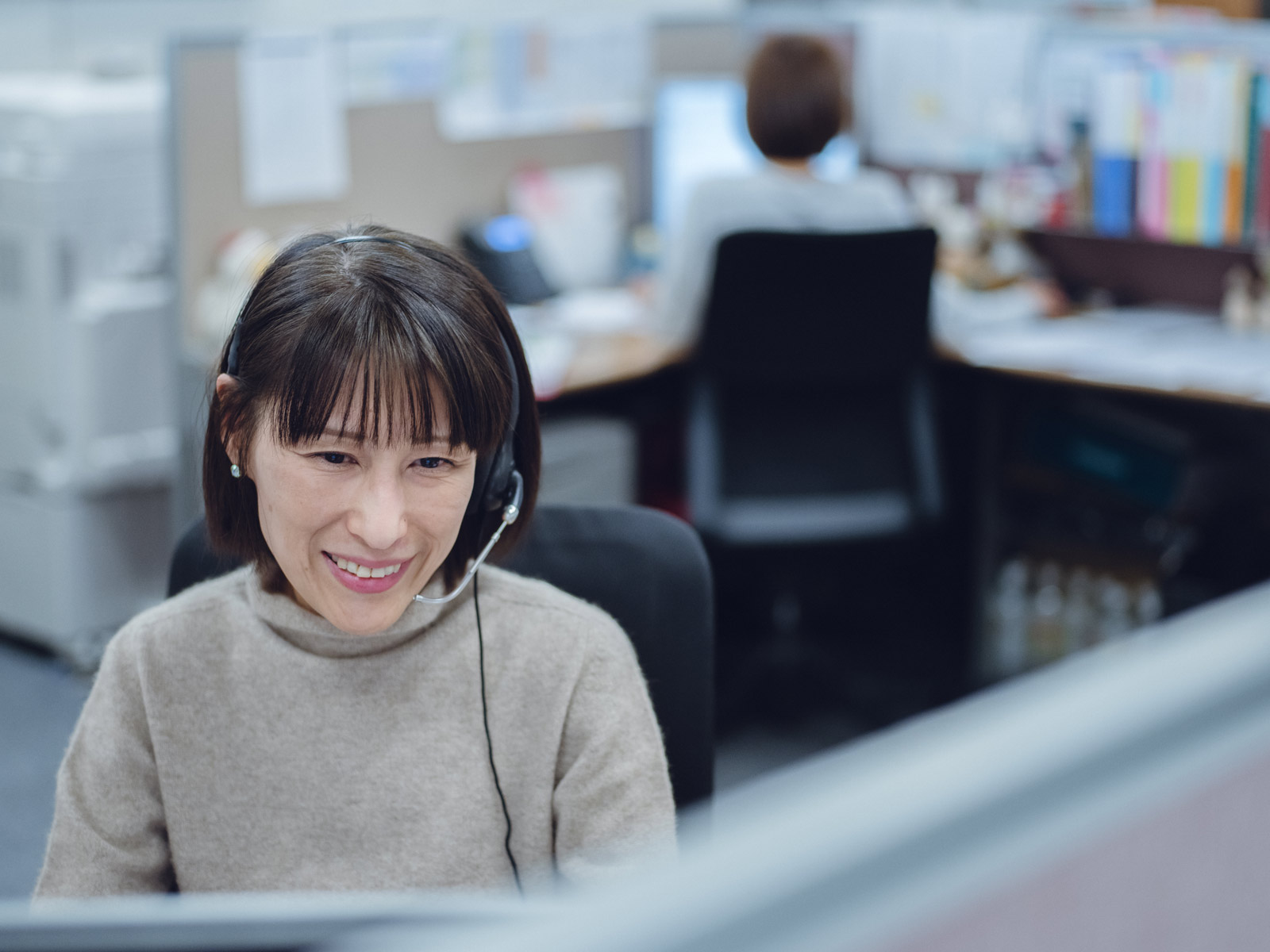It’s appropriate that Cathay Pacific Cargo’s Tokyo offices are located in Shiodome. First, it’s a modern development close to upmarket Ginza so there is a premium brand parallel. Second and more significantly, it’s built on the site of a former rail-freight terminal, so cargo is very much in the building’s DNA.
From an airy open-plan office overlooking a tangle of rail and monorail lines, skyscrapers and an imperial garden, Cargo Manager Japan Shuichi Ueba oversees the commercial and operational sides of Cathay Pacific’s cargo business in Japan. He manages 14 Cathay Pacific people in this office, 62 in total across the country.
‘There are commercial teams in Tokyo, Osaka, Nagoya and Fukuoka, with operational staff based at Narita, Kansai/Osaka (KIX) and Nagoya,’ he says. ‘At the rest of the ports, we manage ground handling agents (GHAs). Narita is the only self-handling port, the rest of the ports are basically handled by GHAs. Our people’s job is to manage how the GHAs work and ensure the safety, security and quality of our service.’
It’s a complex undertaking. There are six Cathay Pacific freighters a week from Narita and four from KIX – with an additional six Air Hongkong freighters from each port, and a further five from Nagoya. In terms of passenger flights for the summer season, there are 152 services to Hong Kong from all the airports served by the Cathay Pacific Group. ‘It’s growing all the time; it’s hard to keep up,’ says Ueba-san.
The two major ports dominate the cargo market though. ‘In terms of port breakdown, 85 per cent of our cargo goes from two ports – I would say 55 per cent from Tokyo, 30 per cent from KIX,’ he says. ‘The other 15 per cent comes from the remaining ports, such as Nagoya, Fukuoka and Sapporo.’

Tokyo and Osaka dominate because they are the two biggest cities ‘and the cargo infrastructure is so well set up in these ports,’ says Ueba-san. Additionally, they are hubs for consolidation from their catchment areas.
Quality is the watchword across all aspects of the business here. This is even more the case now that there are a growing number of direct services from Japan to the region and beyond to the US and Europe. Japan’s focus on quality was rewarded recently when the Cargo Services Team were selected above all of Cathay Pacific’s markets to be awarded ‘best for cargo service’ by the airline.
Ueba-san says: ‘I’m proud of the team. Japanese shippers and forwarders really care about the quality of the service we provide. Our job is to provide a “single quality service” compared with direct services from other airlines, including transiting through Hong Kong or breaking down and rebuilding shipments there. High quality of service is one of the measures that will enable us to retain and grow the business.’
Quality also applies to the main air cargo imports and exports from Japan. The biggest cargo by volume are the machines that make electrical components for mobile phones, while the other major product is car parts for the automotive industry.
‘Airlines have an important role in the supply chain,’ says Ueba-san. ‘Nowadays car makers have less inventory to be more cost efficient. A lot of Japanese cars are assembled on lines outside Japan, but the parts are still manufactured here and exported to Thailand, India and the US, where the cars are assembled. A normal car has 30,000 parts, so if just one of these is missing, you can’t assemble a complete vehicle.’
One market that is big for the team (in all senses) comes in the form of the machines that make semiconductors; in particular, steppers. These are the big and sensitive machines that print the chips for the latest mobile phones and other devices. They are bulky, but also as expensive as they are fragile. ‘Japan still has the best technology in terms of precision and the miniaturisation of these chips,’ says Ueba-san. ‘We hire highly skilled staff to handle these shipments because they are so susceptible to shocks and temperature fluctuations.’

Managing temperature variations is also a challenge in transporting Japan’s cherished produce, be it fruit or seafood. ‘In fact, 43 per cent of our total business use our special shipment products, whether they are ExpertLift, FreshLift or our other specialist products for large and unusual cargo,’ says Ueba-san.
Sapporo and Fukuoka are responsible for the majority of perishable shipments. From Fukuoka, 63 per cent of shipments are perishable, the biggest export being strawberries, mainly to Hong Kong. From Sapporo, 92 per cent of shipments are perishable, with the main product being the Hokkaido scallop. Ueba-san sees this as a growing trend for the country.
‘Japan is promoting inbound tourism and last year we welcomed 20 million visitors – the government is aiming to double that by 2020 when we host the Olympic Games,’ he says. ‘More tourists are coming in and trying produce during their stay, then they want to buy it after they go back home, even paying a premium for it. I think, in future, the perishable market will not be focused solely on Hong Kong and Taipei, but will grow in different regions worldwide.’
In terms of imports, they are stable. For a high-tech country, Japan is surprisingly more of a consumer than producer of pharma, and its people also have an appetite for fresh produce. Ueba-san says: ‘We import cherries from the American Northwest when they are in season, and salmon from Norway is always another good item.’
There is certainly enough business to keep the commercial team busy. They work with around 100 forwarders and are mostly handling calls rather than chasing business. ‘When a forwarder has a shipment, they know who to contact,’ says Ueba-san.
Taipei and Hong Kong are quick wins for the team as there is space in both passenger belly and freighter services, but where demand is high, on routes to the US or Europe for example, the negotiation is internal as well as external. ‘We always do our best to make the deal but space can be constrained,’ says Ueba-san. ‘Nevertheless we have a strong team, not only in Japan, but network wide. In terms of coordination and communication between operational units, I really feel we work as one team. This enables us to deliver those commercial and operational results – as well as the service our customers expect.’









